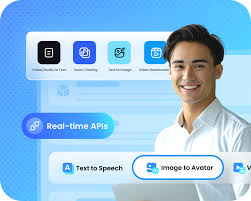Text to Speech AI (TTS AI) converts written text into words that can be spoken through complex algorithms and deep learning models. The process is several steps long, beginning with text processing, where the AI system decomposes sentences to their phonetic constituents. By 2023, a percentage of TTS AI system was capable of processing text in an average time duration of as quick as at the rate per word such that real-time speech generation speed allows virtual assistants and audiobooks to have seamless experiences.
The key factor in TTS AI is the use of neural networks, including deep learning-based ones. This data is used to train the neural networks that process human speech, afterwards able to recognize as well pronunciation features typical for humans like rhythm and intonation. Even so, Google's Tacotron 2 model from two years ago achieved an accuracy of around 98% in copying human speech patterns using a sequence-to-sequence architecture with attention mechanisms as evident in this blog post. As a result, the AI can create speech that appears to be more natural and emotionally-toned.
One of the major tasks TTS AI has to solve is how to convert text into phonemes which are little pieces of sound in a language. Letters and letter sequences are mapped by grapheme-to-phoneme (G2P) conversion, a process the AI uses to predict how sounds will be pronounced. For example, in 2022 a study published by the Journal of Computational Linguistics discovered that converting English to its G2P resulted in only having an error rate is at about 95%, which significantly contributed to how modern TTS systems are able maintain intelligibility.
The AI then adds prosody — the sonic contours of rhythm, stress and intonation. Prosody plays an important role in expressing emotions and making the voice generated sound not too robotic. User perception surveys reported that by 2024 a Microsoft-based AI system had integrated prosody models which improved naturalness over speech, but still only scored in the low to mid grade on human-sounding style. To create this, the company has trained its AI with large datasets of diverse speaking styles and emotional tones.

TTS AI systems also use a Vocoder, this is an signal processing technique that converts post processed phonetic and prosodic information back into waveform audio. DeepMind developed this in 2016, and it has been a game-changer because of its ability to generate audio waveforms straight from raw data — they said that gave us like a fifty percent improvement over how you get really good sound quality versus old school methods. Many TTS systems now include WaveNet vocoders, which are capable of generating speech with logical human voice properties.
In real life, TTS AI is used in media and entertainment industry, education sector as well for accessibility. By 2023, Audiobook Production Companies were able to reduce production time by up to 40% using TTS AI for creating professional quality narration. This efficiency ensures the faster delivery of content to consumers and helps maintain an excellent sound quality.
In addition, TTS AI technology is an essential tool for assistive applications to help the visually challenged. According to the National Federation of [I]he Blind, by 2022 TTS AI systems can be embedded into screen readers upto… faster reading at +25% for blind users. They provide a critical access point for digital content, allowing millions of people to lead self-determined lives and participate fully in an increasingly digital society.
For a more advanced look into how this works and what you could use it for, text to speech ai has numerous resources as well as the latest developments. Over time, and with the continued march of progress in TTS AI engines these requirements sure look set to become more accurate, natural sounding and universal across many domains.
